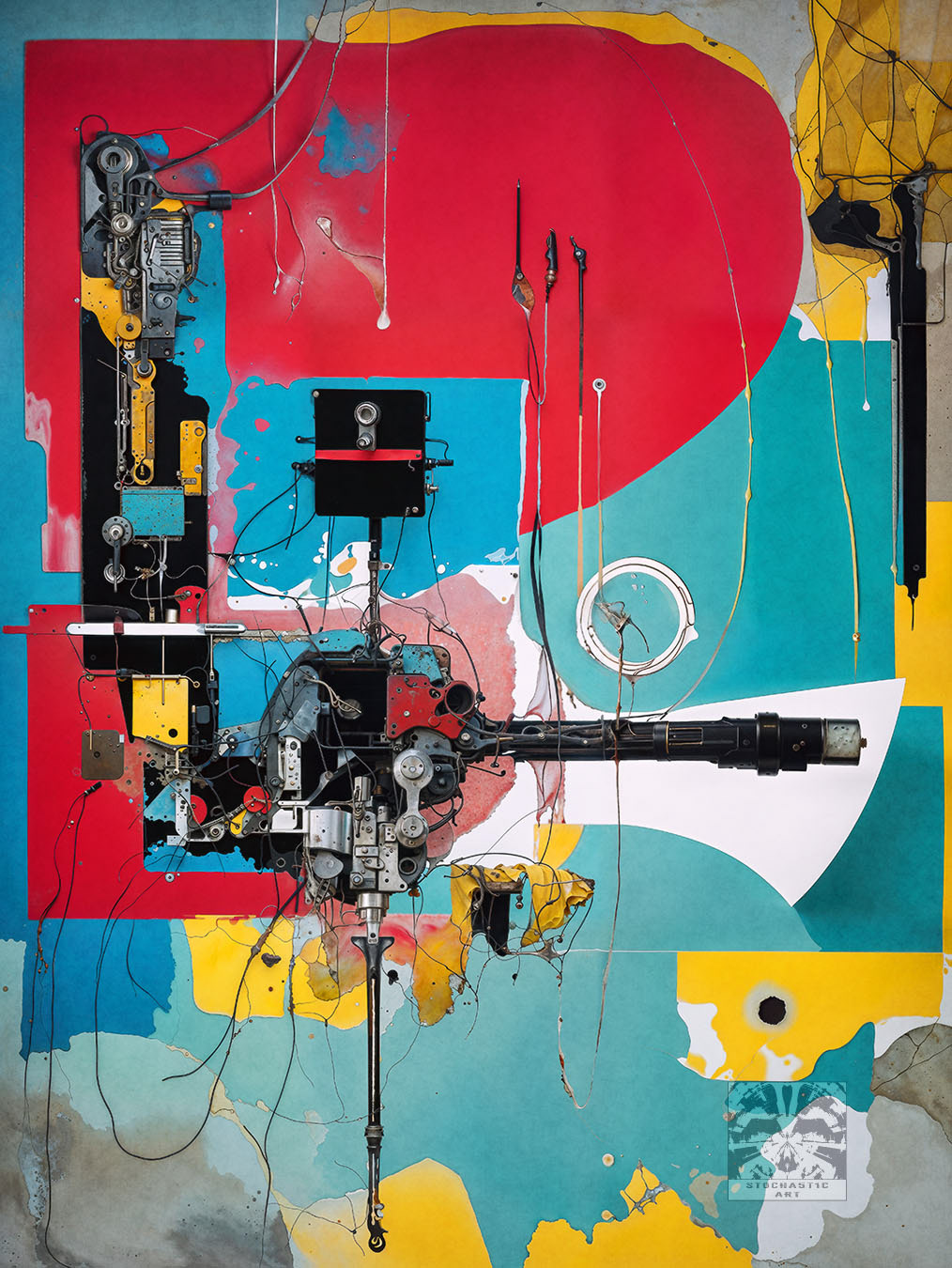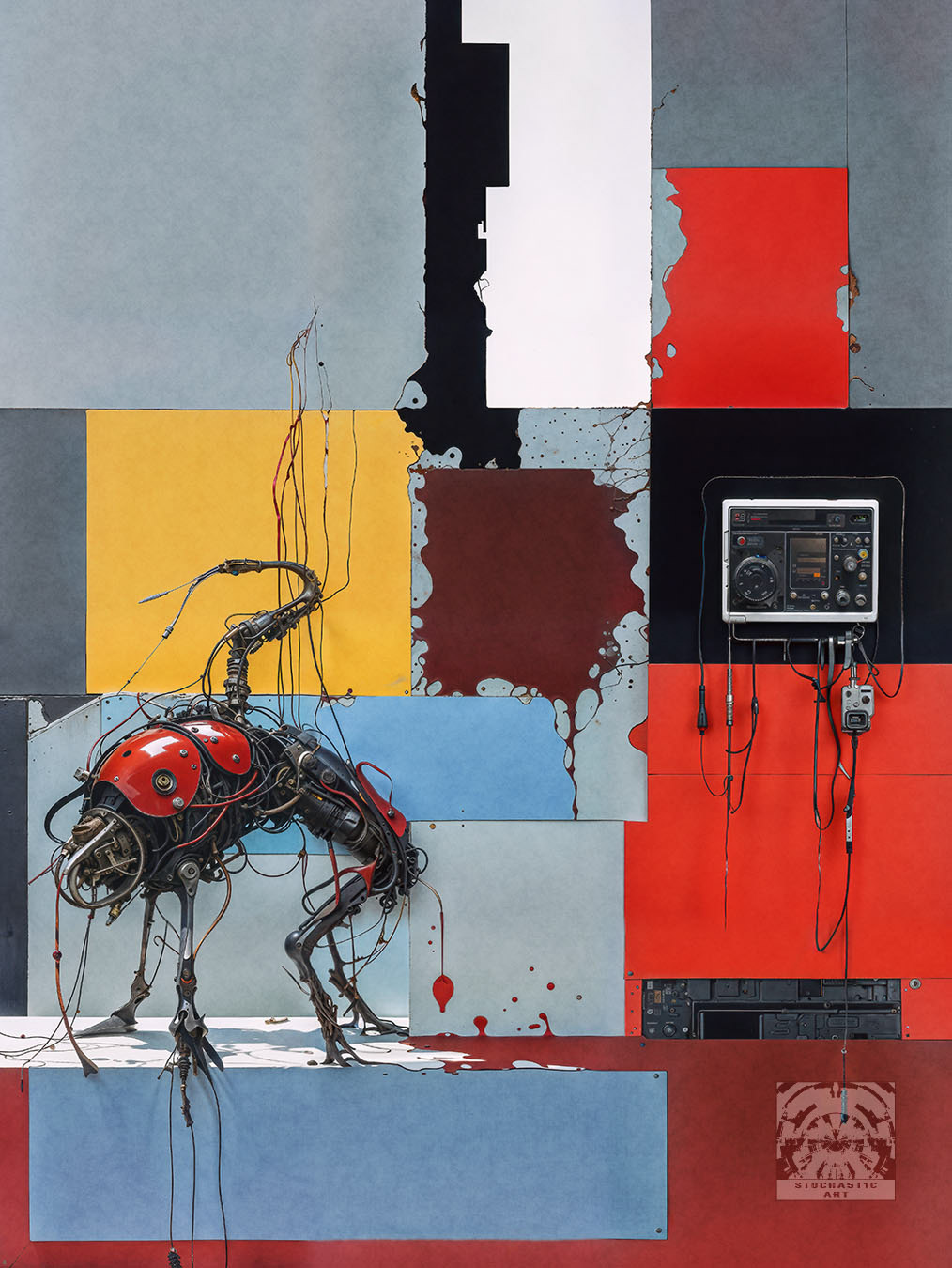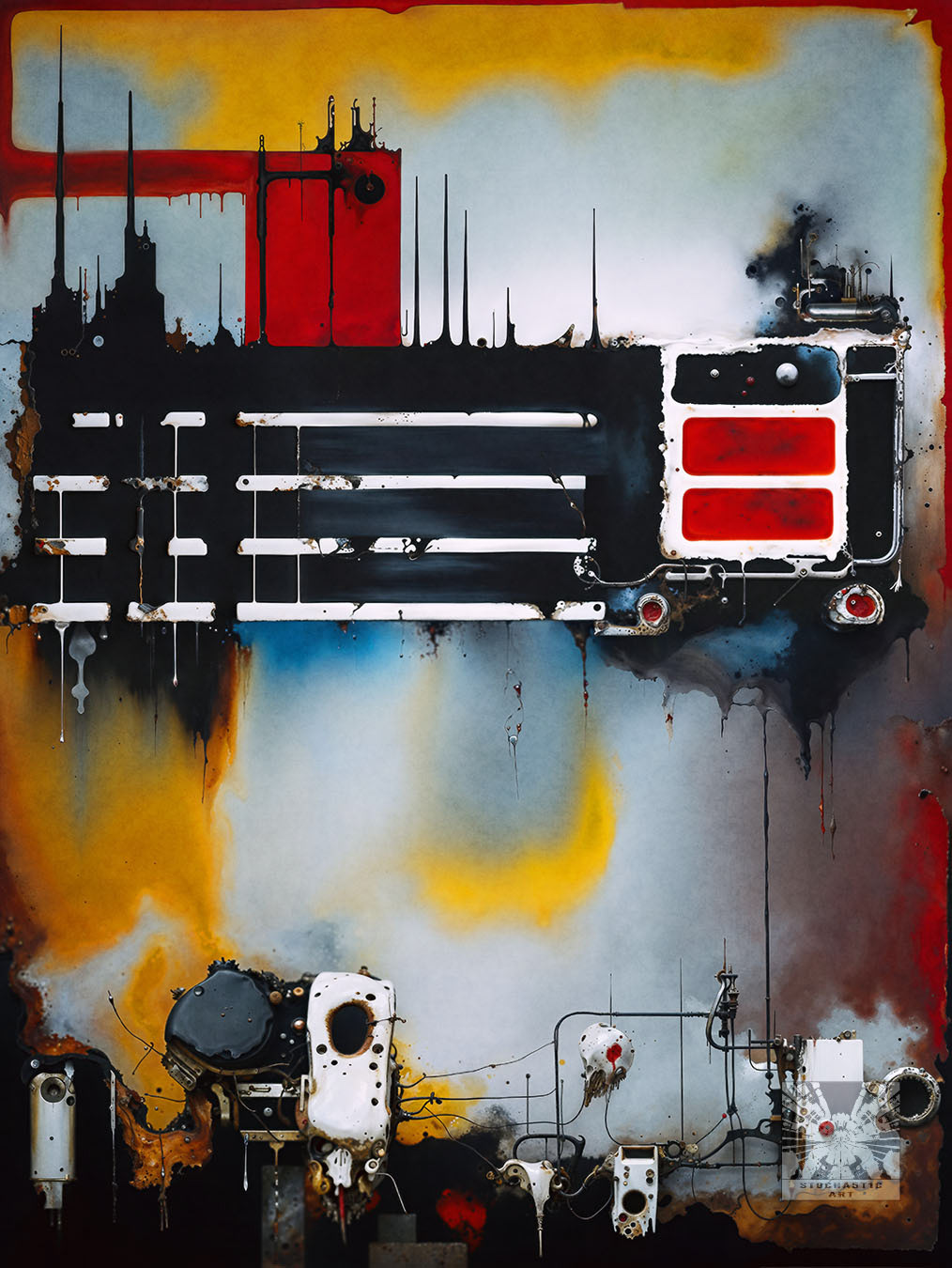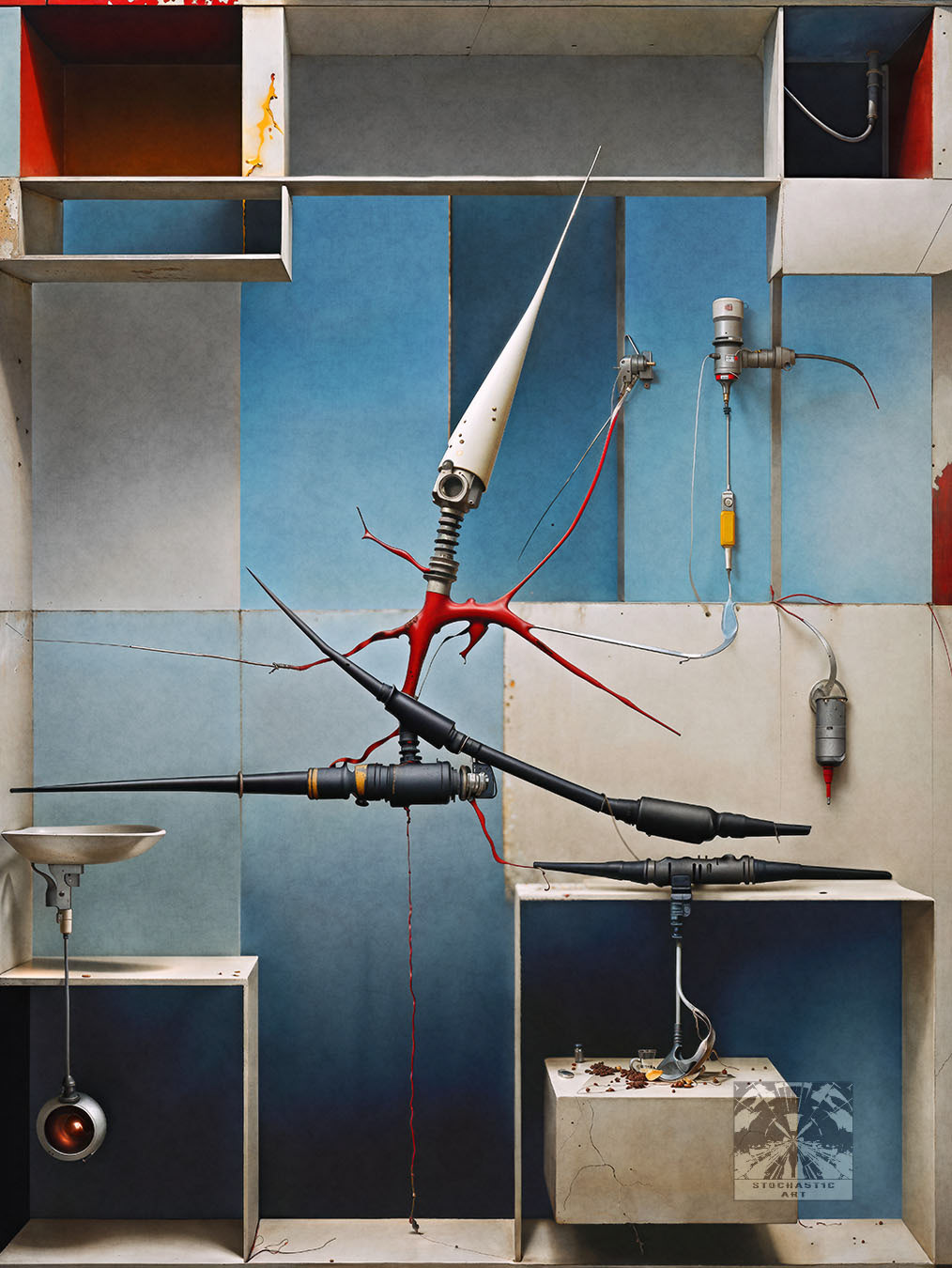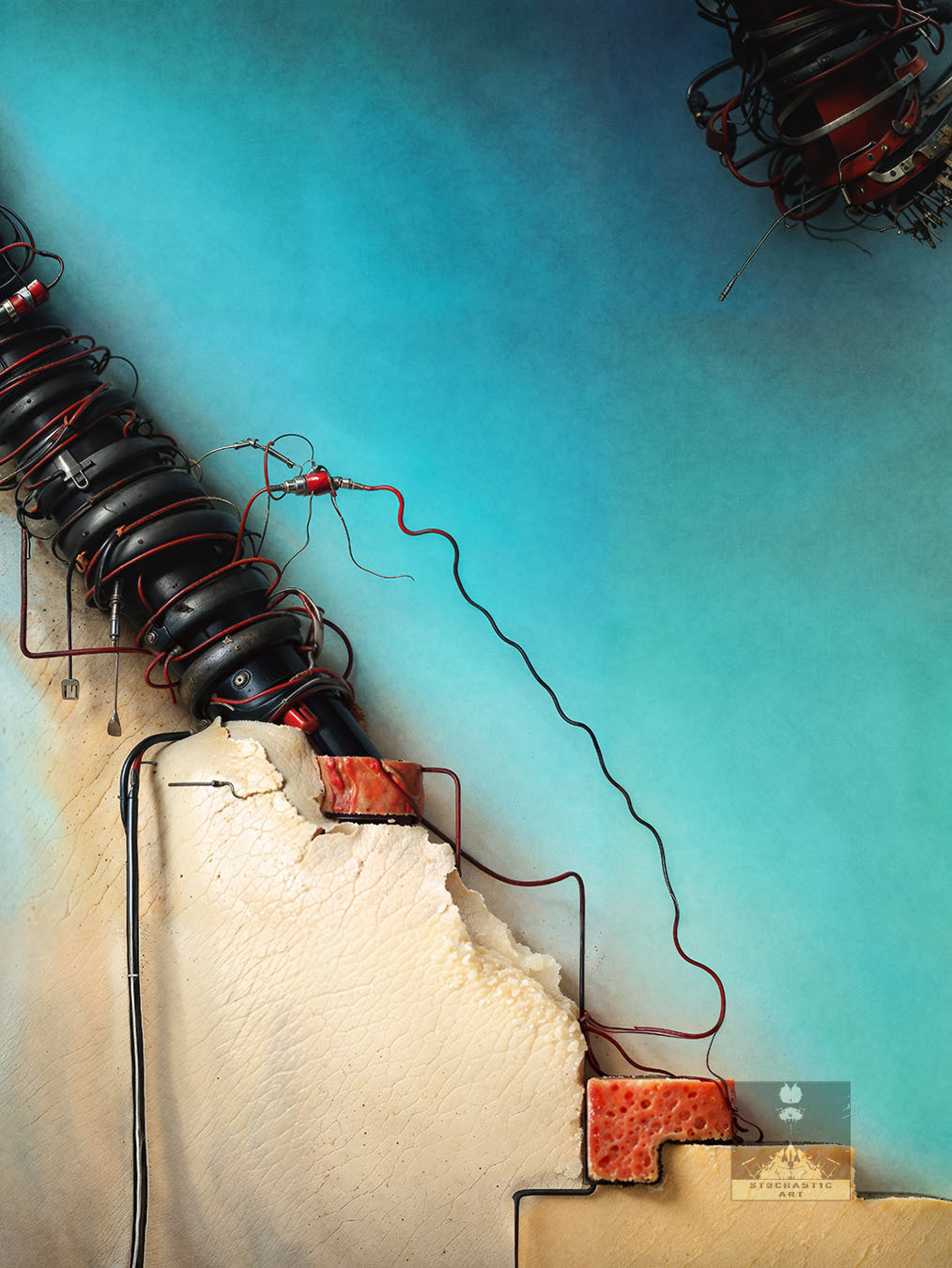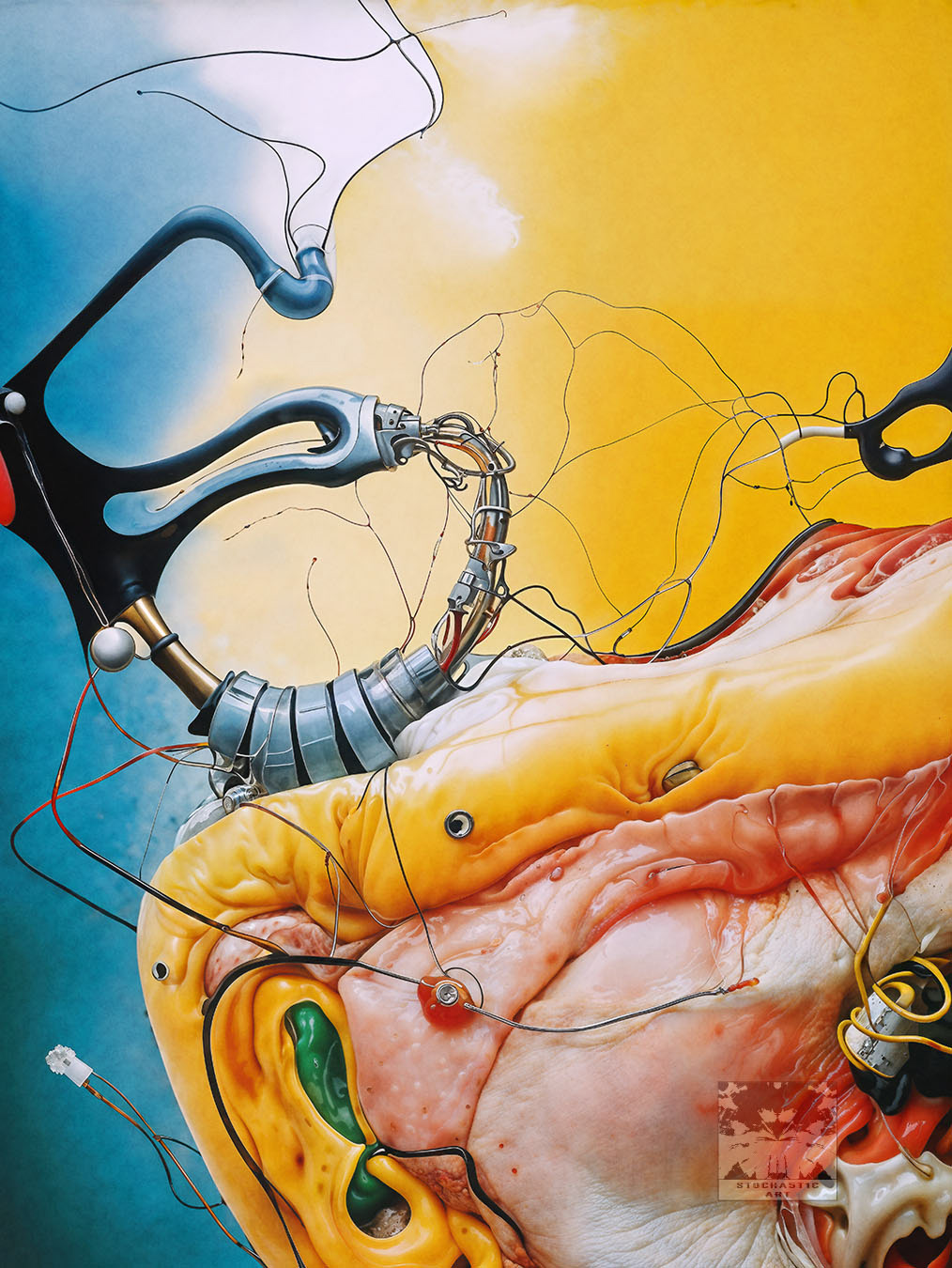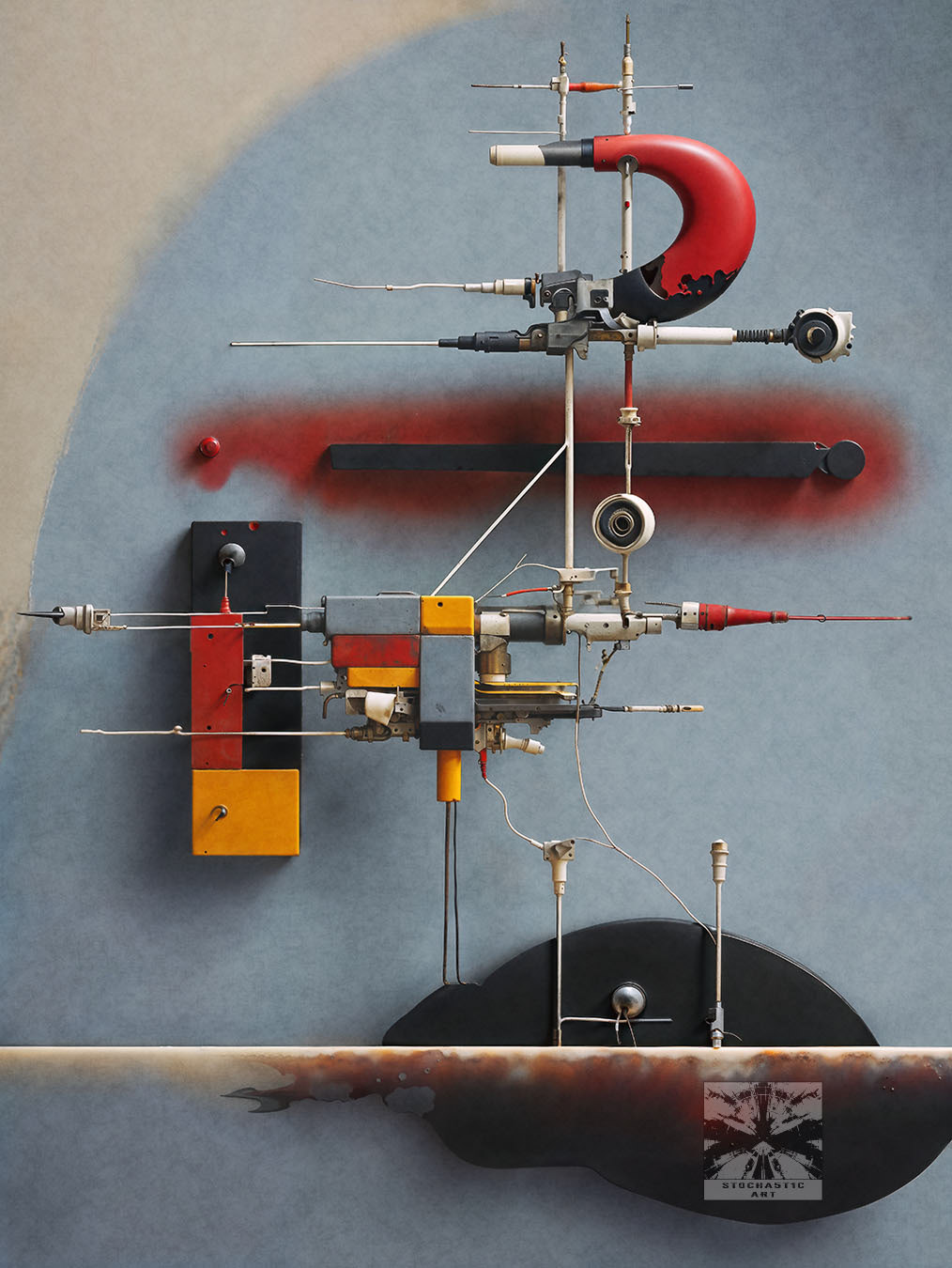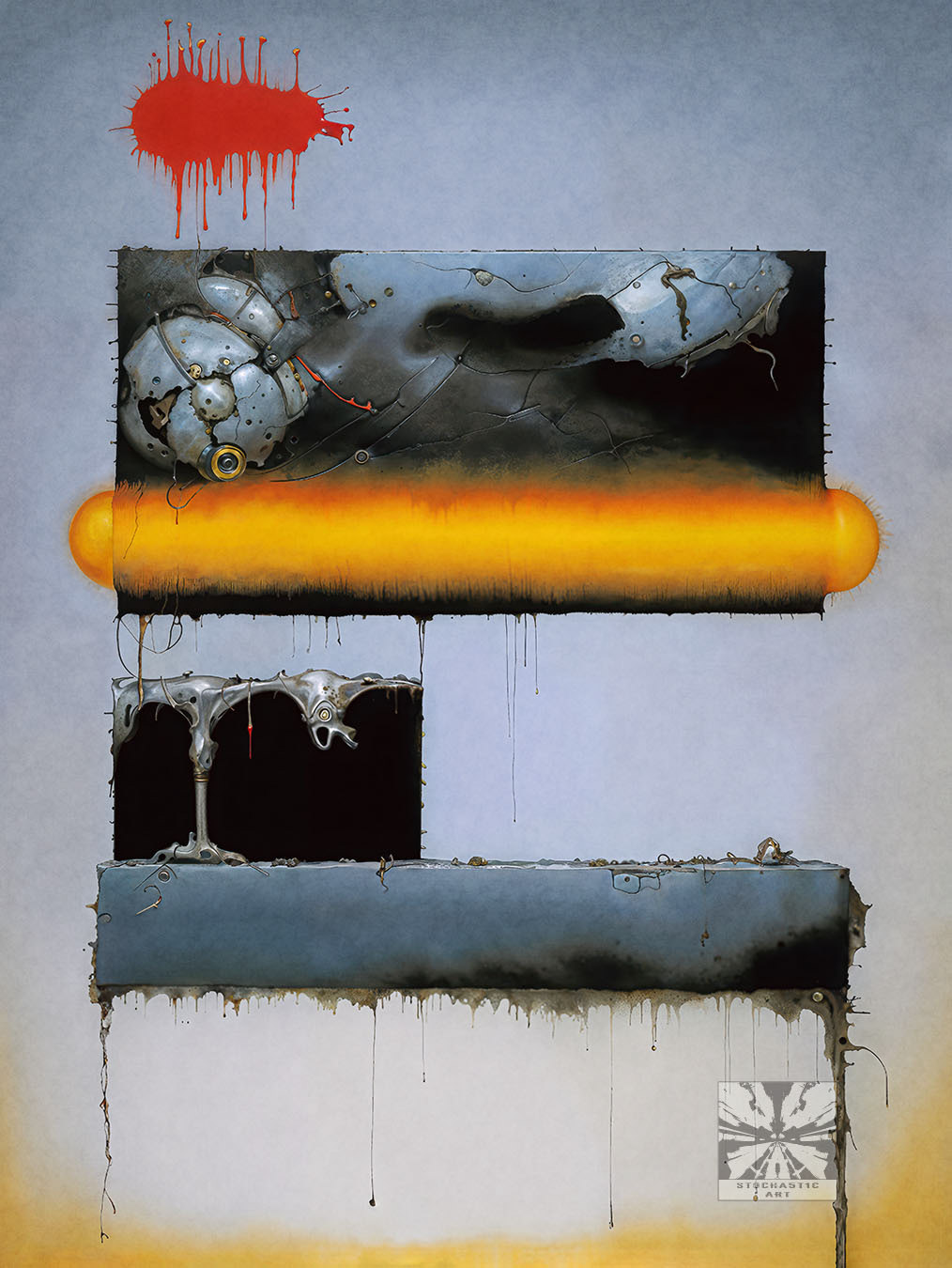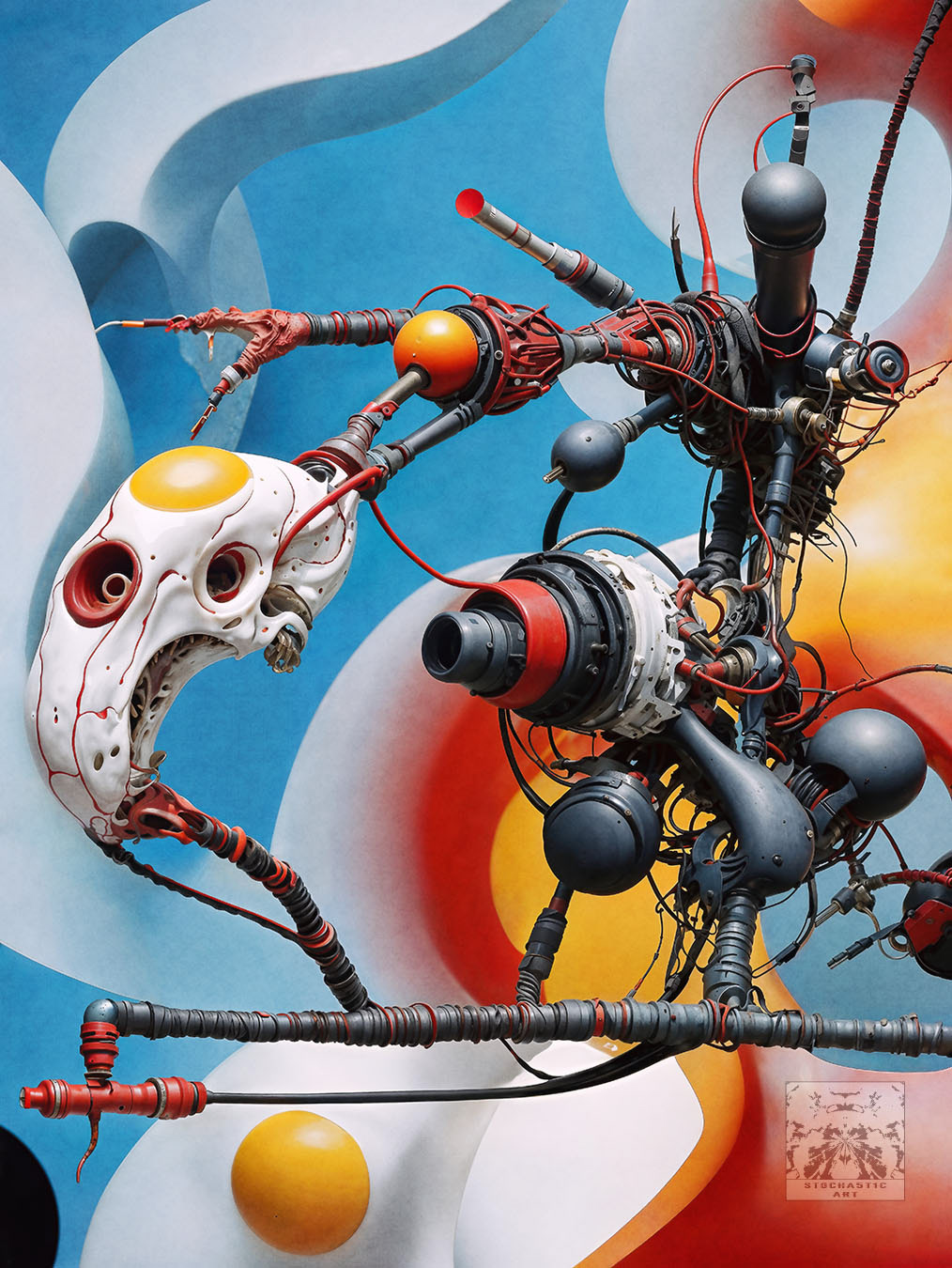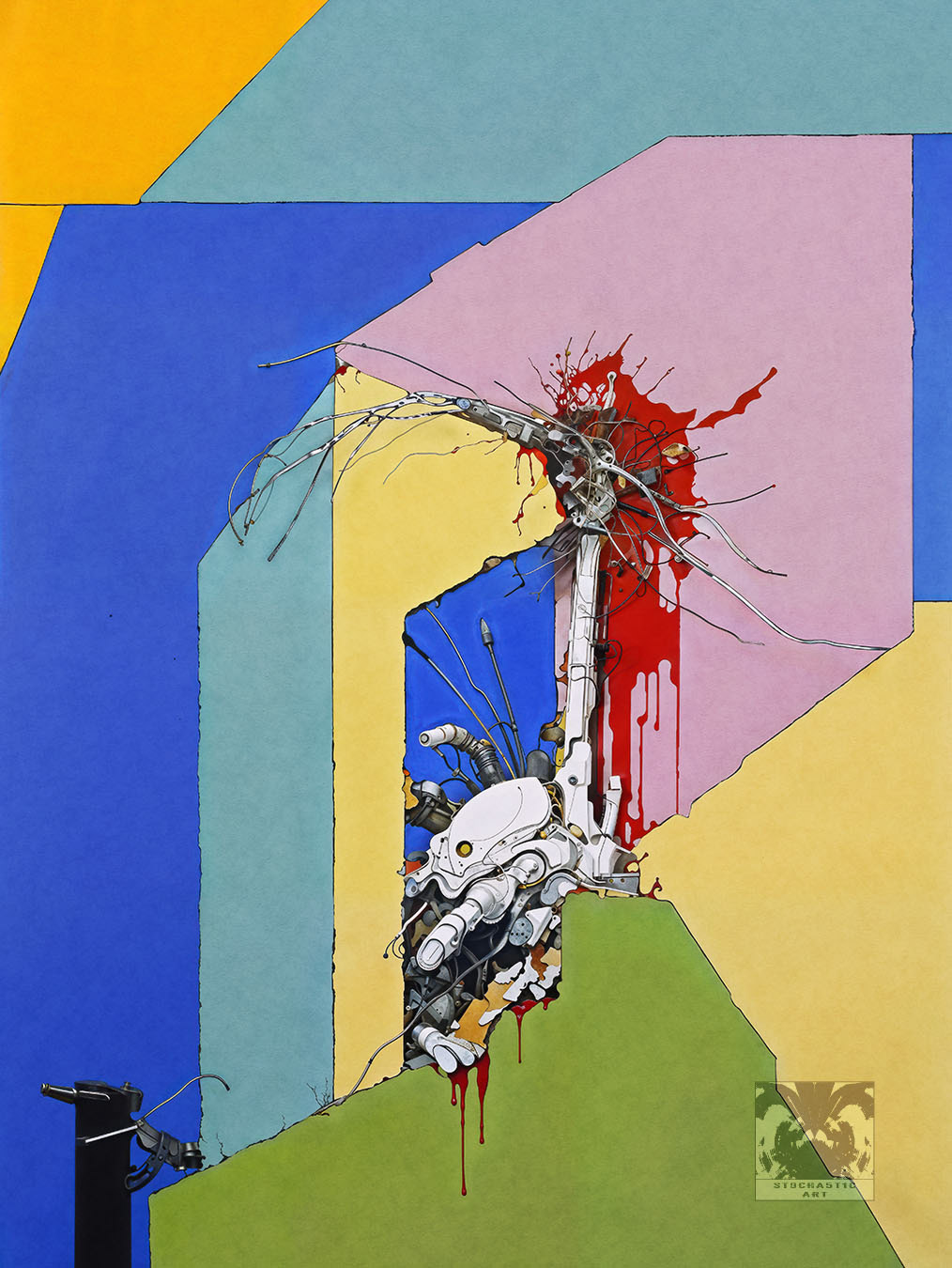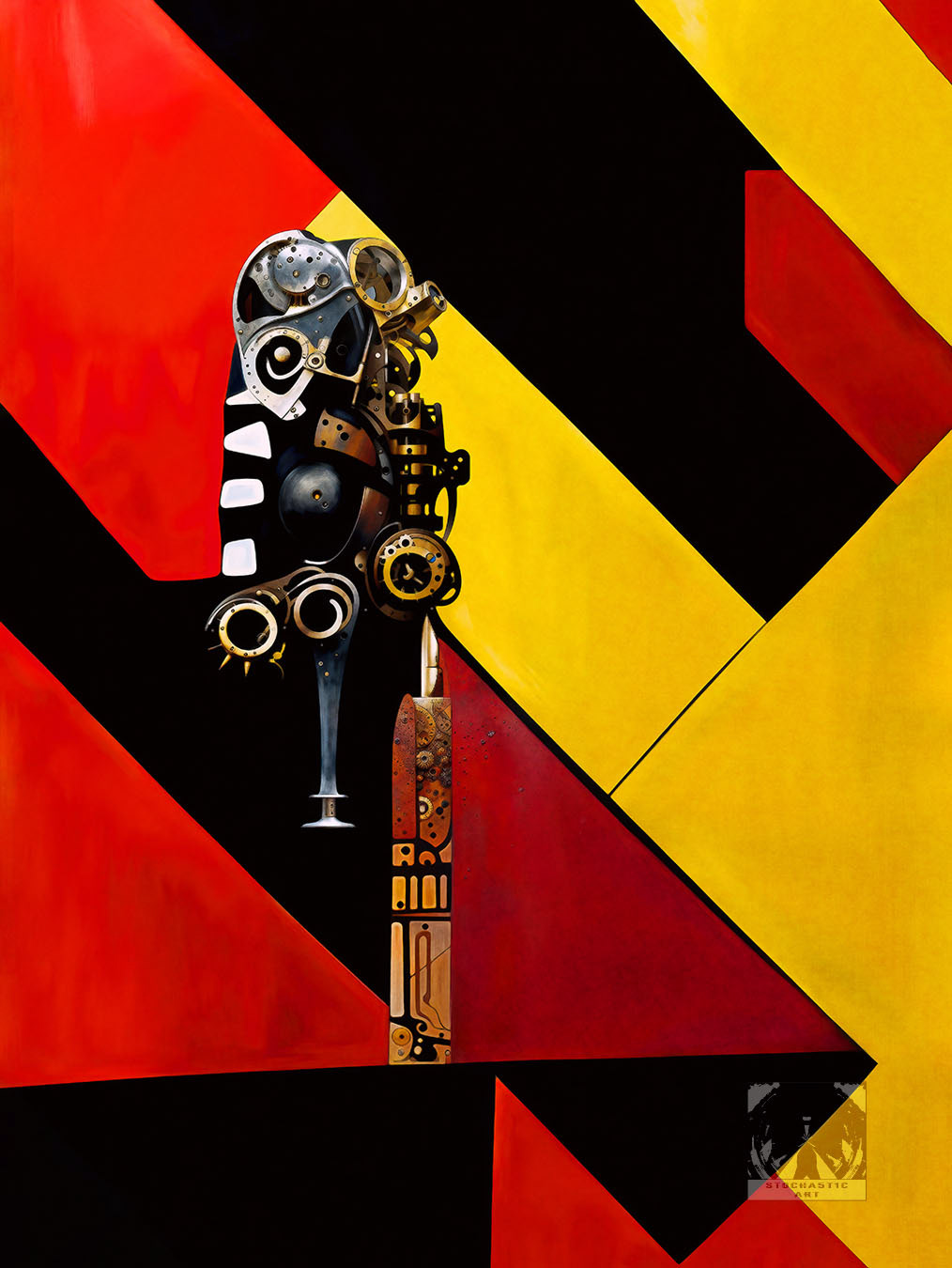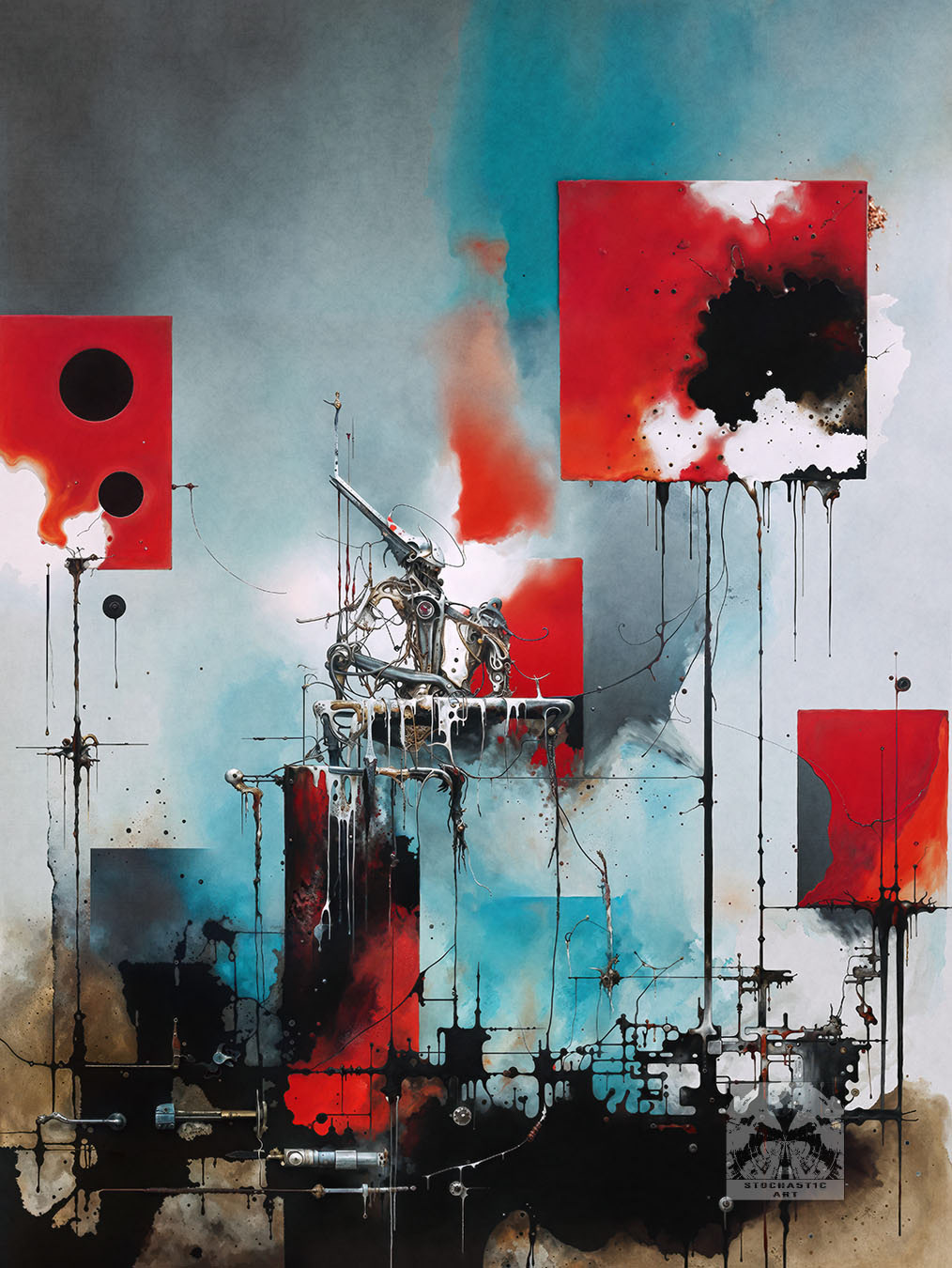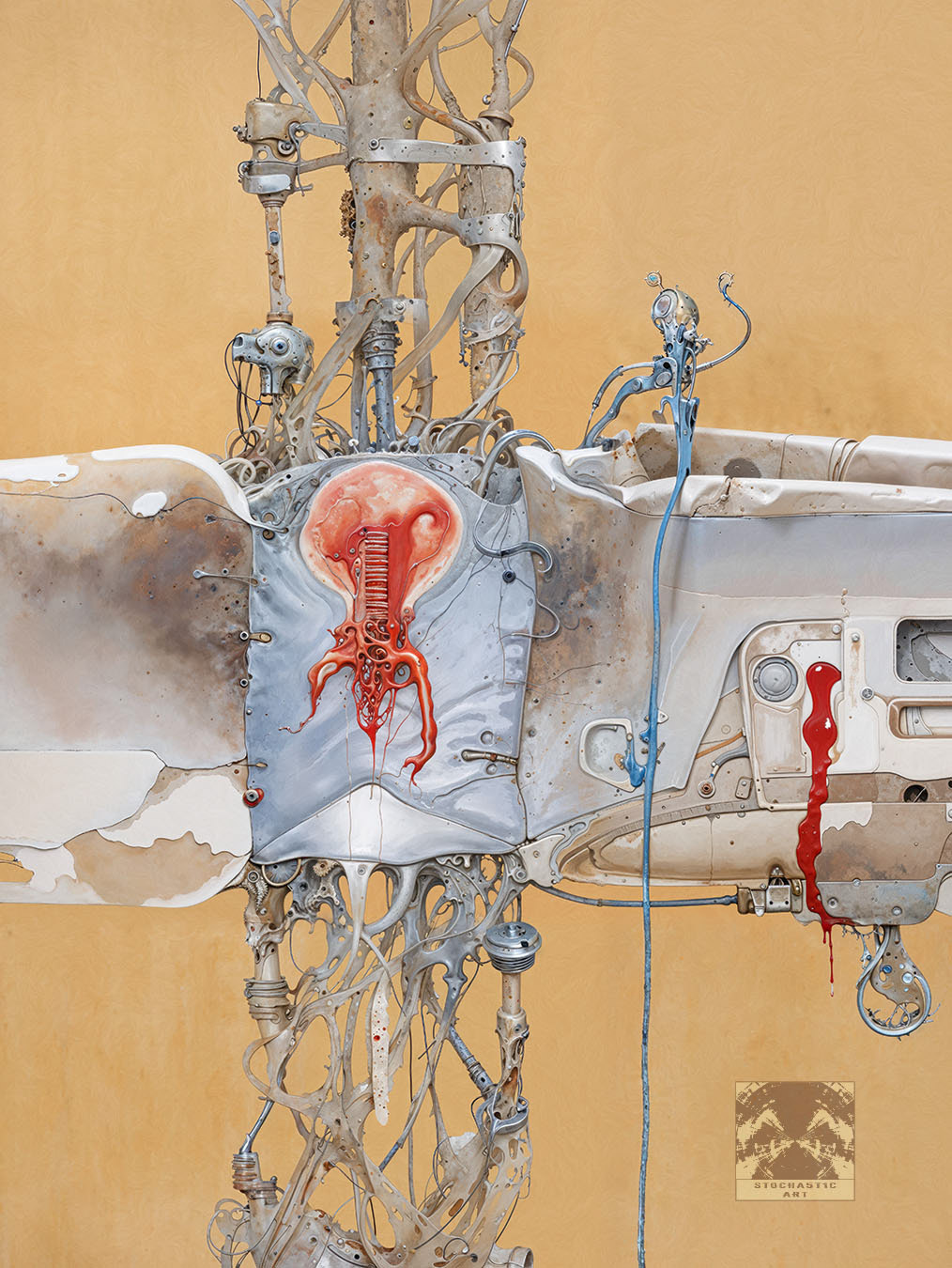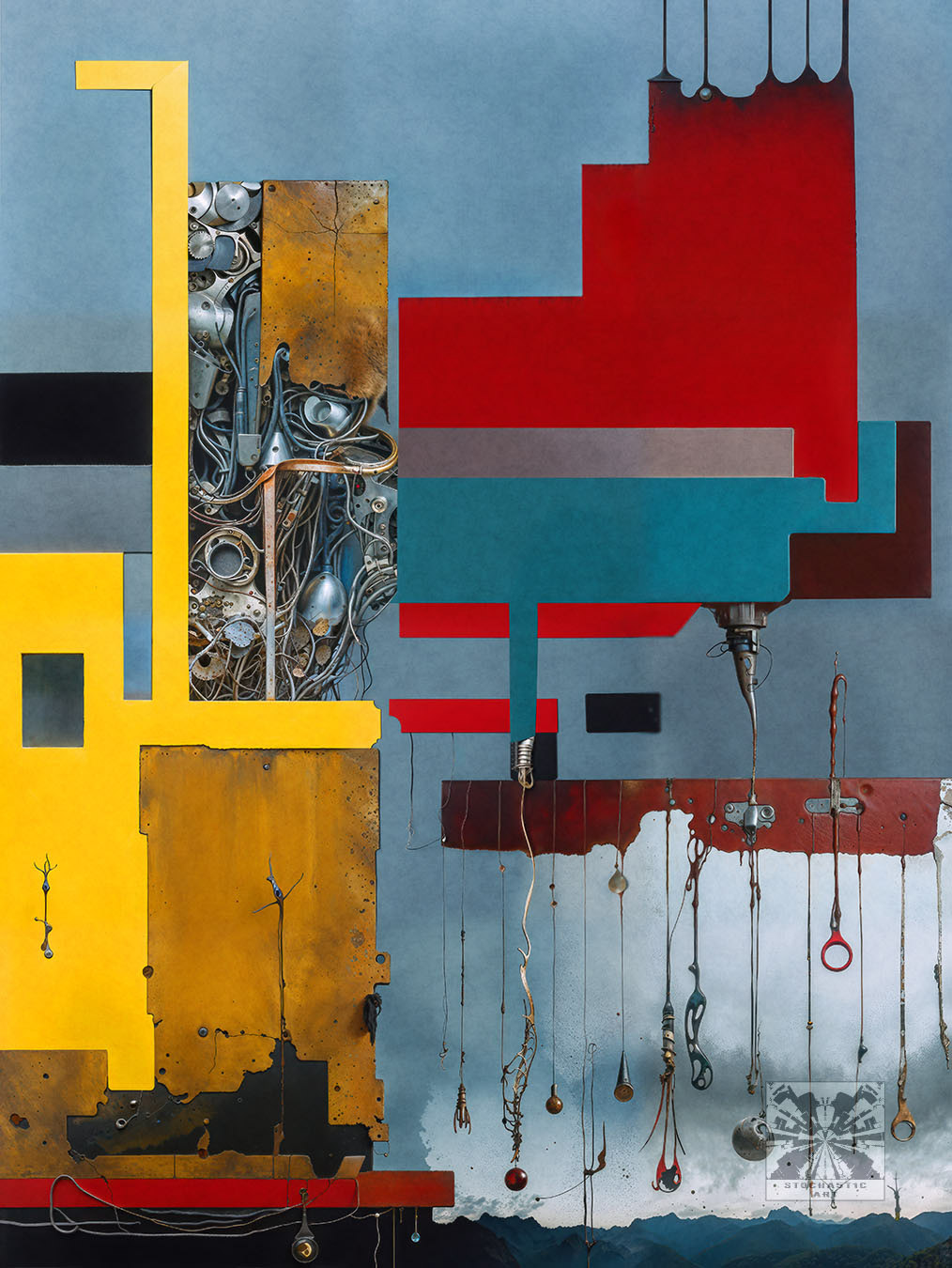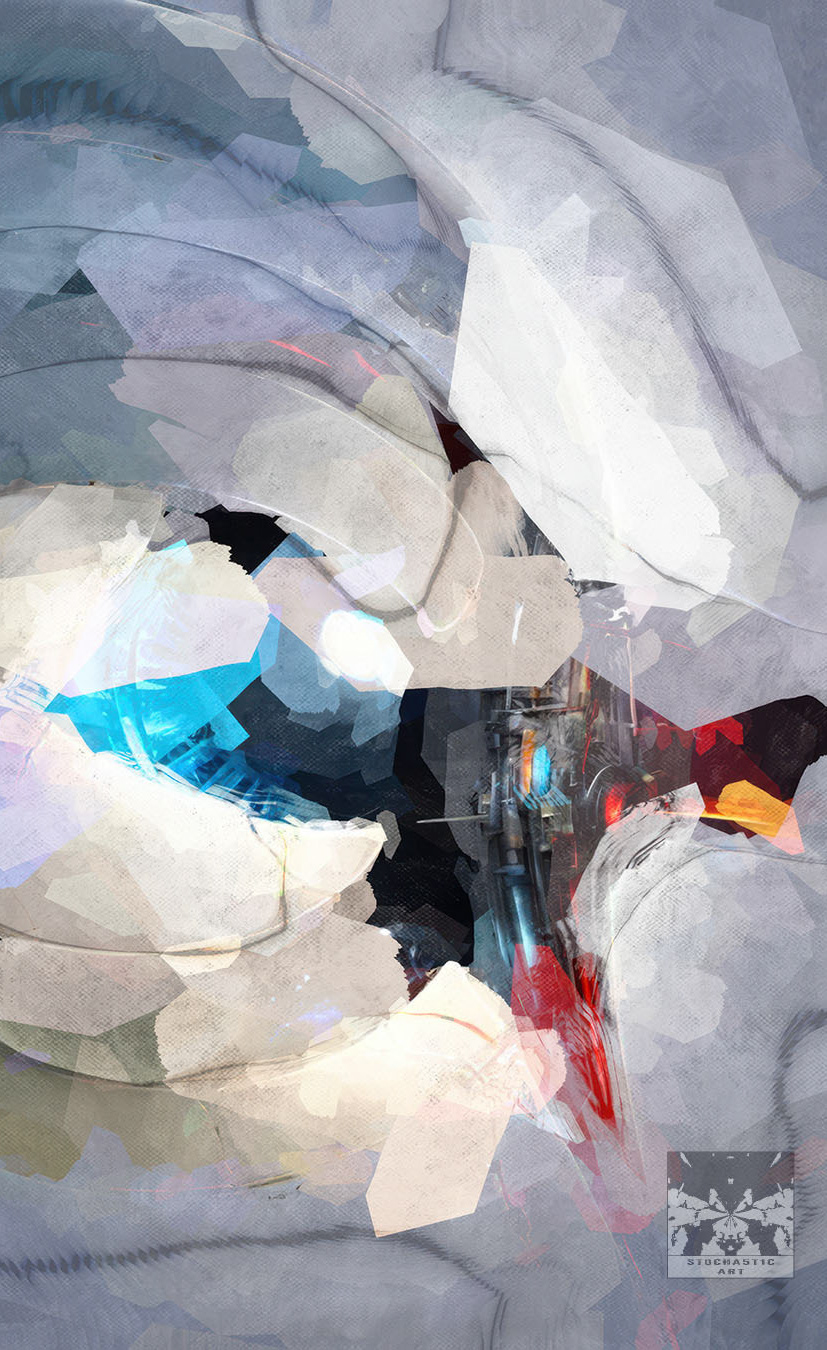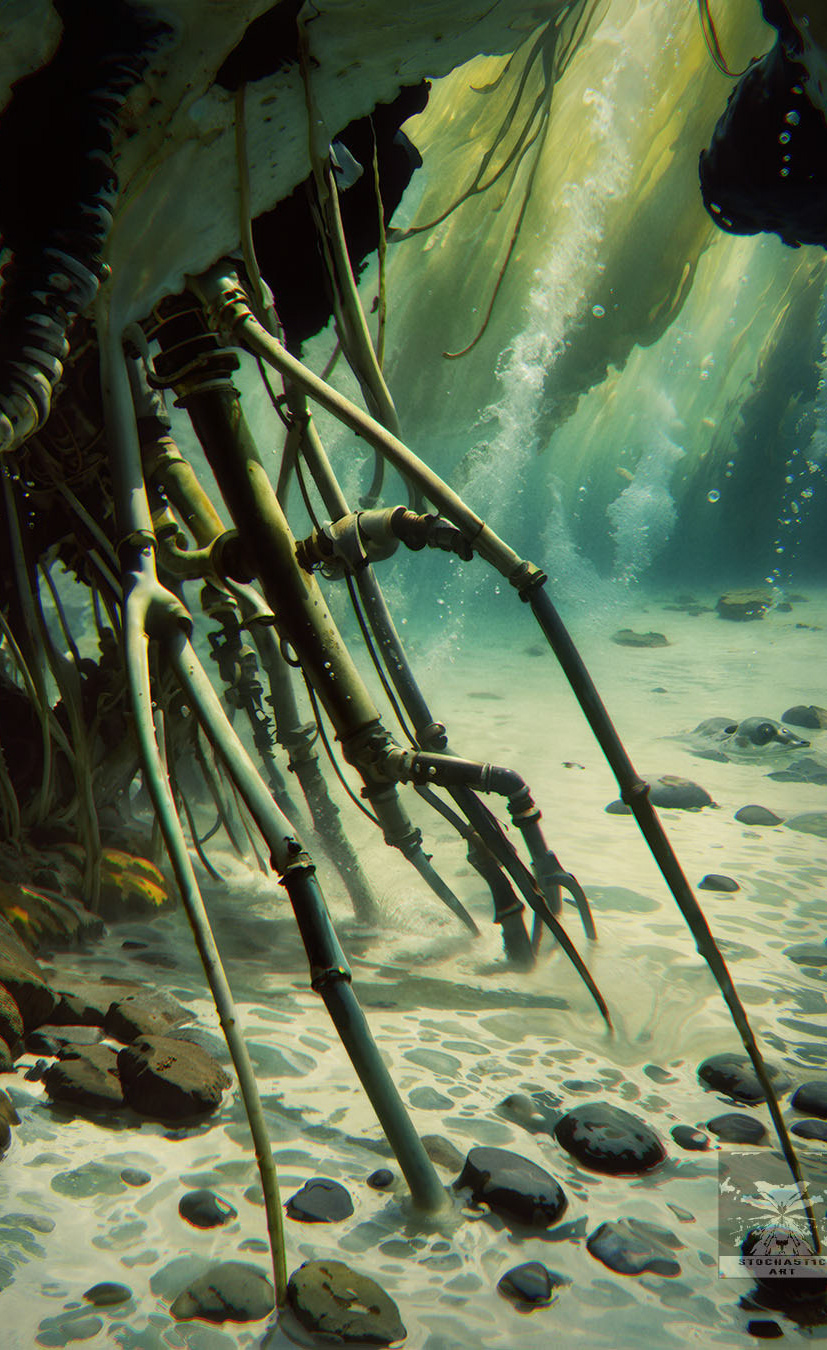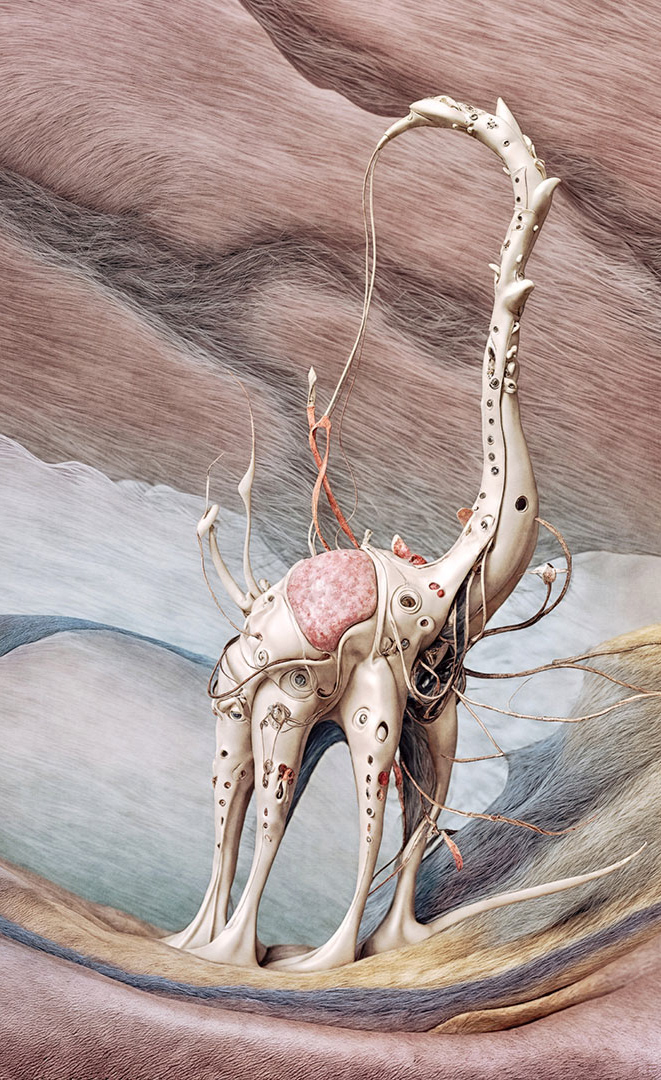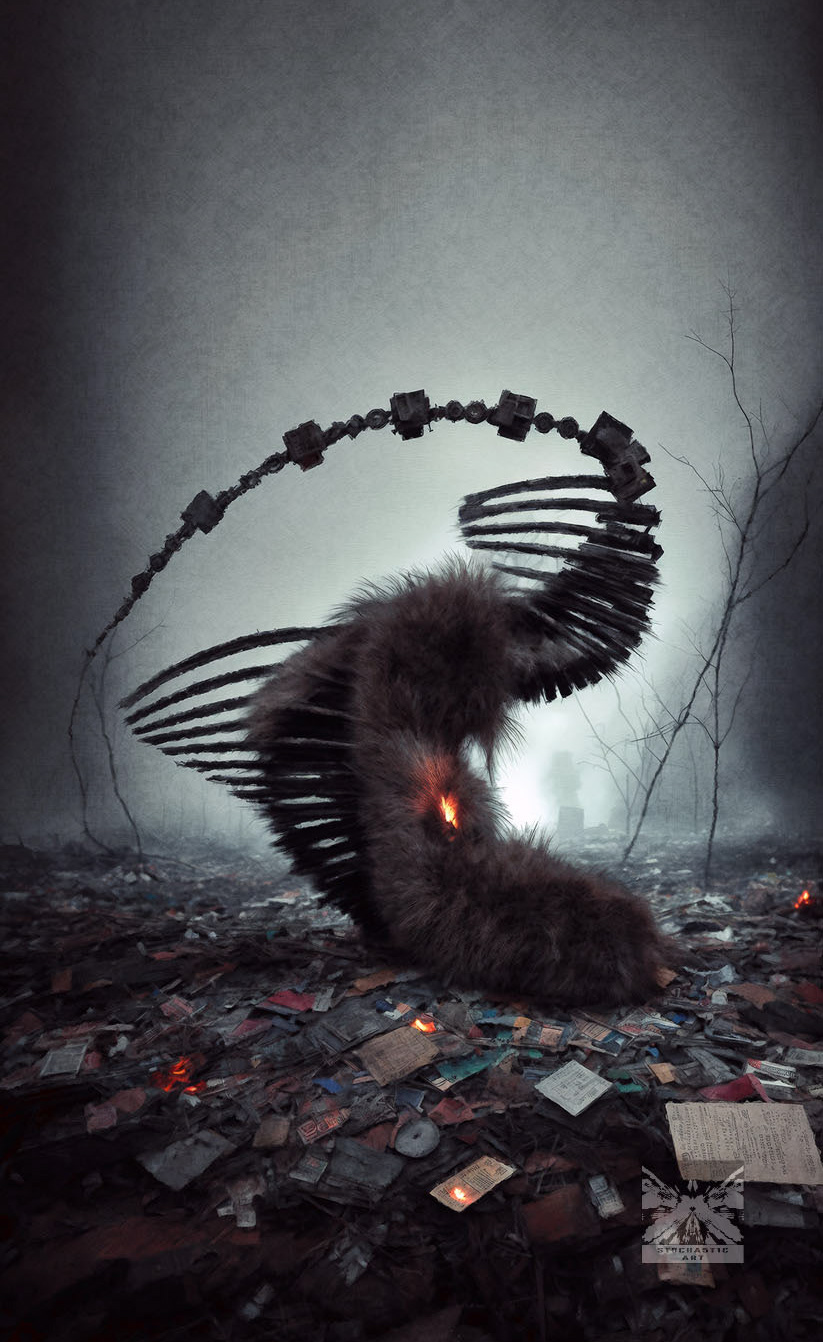"The cycle 'Entanglement' is a complex narrative depicting the clash of two seemingly contradictory worlds — mystical harmony of abstraction and decadent chaos. The artist, drawing inspiration from the achievements of classical masters of abstraction like Mark Rothko, Paul Klee, and Piet Mondrian, uses their emotionally minimalist geometric structures as a symbolic foundation. With this knowledge, we anticipate color harmony and beauty, but instead, we are met with their deconstruction. On this disciplined foundation, biomorphic forms blossom, revealing influences of surrealism and the biomechanical aesthetics of Hans Giger. These forms break the purity and tranquility of the composition.
By referencing the mystical aspirations of early 20th-century avant-garde movements, which sought to create a new visual language of pure form and the spiritual dimension of color, the artist confronts the utopian vision of abstract harmony with the dystopian reality. We can read this dissonance as a commentary on contemporary utopian projects — visions of a society controlled by technology that gradually loses touch with organicity, with human unpredictability. The biomechanical forms remind us of our substantial bond with technology, the constant tension between utopia and dystopia in which we live. From this perspective, 'Entanglement' is not merely an aesthetic contemplation but becomes a philosophical inquiry into the limits of human control and what lies beneath the illusion of perfection.
The artist, much like postmodernists, proposes reflections on whether purity of form is even possible in today's world. As in Jean Baudrillard's work, there is an uncertainty about reality. Isn't our perception of abstract harmony just a simulacrum, and what lies beneath the surface is the hidden truth — complexity, suffering, anxiety? 'Entanglement' forces us to reflect on whether we can avoid the revealing of truth — or perhaps every perfect form inevitably conceals an element of its own destruction.
In the context of contemporary art, 'Entanglement' is also a commentary on transgression and the boundaries of the body — themes present in the works of contemporary artists such as Stelarc or Orlan, who question the nature of the human body through technology. The omnipresent organic-mechanical forms can be interpreted as what modernity brings to art: uncertainty, digital evolution, and transhumanist anxieties. It is a metaphor for the painful process in which mathematical elegance becomes infected, and forms resembling mechanical parasites take over space — much like technology, which, while promising order, may bring chaos and loss of control. In this way, 'Entanglement' becomes an allegory of the contemporary human condition — entangled in technology that we no longer know how to master."
